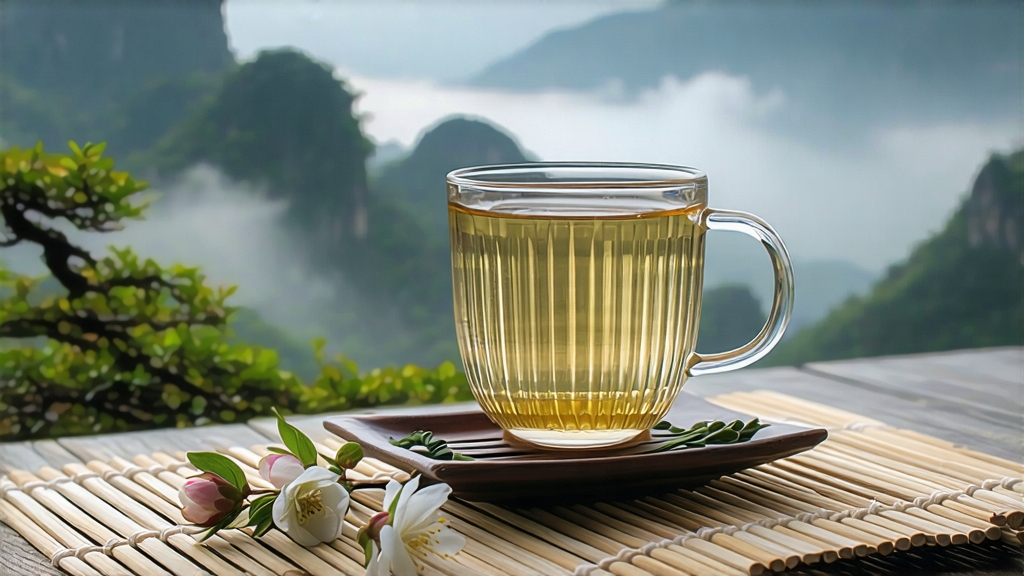
Among the six major families of Chinese tea, white tea is the most quietly luminous, and within that family Bai Hao Yin Zhen—“Silver Needle”—is the luminous core. First recorded in the Song dynasty’s “Da Guan Cha Lun” but not formally named until the Qing, this tea is picked only in early spring, only on clear cool days, and only the unopened single bud. The result is a spear of ivory silk so downy it seems to have been spun by moths rather than grown on bushes. To international drinkers who meet it in boutique cafés from Melbourne to Montreal, Silver Needle is often described as “the tea that tastes like bottled moonlight,” yet its story begins in the granite soils of Fujian’s Taimu mountain range, where sea fog meets pine-scented air and the Camellia sinensis var. Fuding Da Bai Hao cultivar has evolved extra-large buds to catch every droplet of moisture.
History whispers rather than shouts here. In 1796 a Fuding magistrate presented a small box of these buds to the Jiaqing Emperor; the court chronicle notes only that “the liquor was pale yet sweet, and the Emperor smiled thrice.” By the late nineteenth century Fuding county had become the imperial tribute station for white tea, and in 1915 Silver Needle won gold at the Panama-Pacific Exposition in San Francisco, but the 1930s wars closed the mountain passes and the tea all but vanished from global memory until 1963, when a shipment labeled “White Tea—China” arrived at London’s Harrods, reviving curiosity. Today the European Union protects “Fuding Silver Needle” under geographical indication, the same legal armor that shields Champagne or Parma ham.
The tea’s taxonomy is refreshingly simple: only two genuine sub-styles exist. Traditional North-Road Silver Needle comes from Fuding, where the buds are stockier, the down thicker, and the flavor carries marine minerality. Twenty kilometers south, in Zhenghe county, the South-Road version is slightly slimmer, the leaf chemistry higher in polyphenols, yielding a more floral cup. Purists debate the two the way Burgundy lovers argue Côte de Nuits versus Côte de Beaune, but both must obey the same ruthless picking standard: one bud, no leaf, no second thought.
Crafting Silver Needle is an exercise in disciplined inactivity. The buds are spread on bamboo trays only one layer deep, then left to wither for thirty-six to forty-eight hours in a drafty loft whose windows are opened or closed according to the mountain weather outside. No rolling, no pan-firing, no shaking—just air, time, and the watchful eye of the tea master who judges moisture by the coolness of a bud pressed against her cheek. When the bud can be folded without snapping, it is moved to a low charcoal oven for twenty minutes of “final soft baking” at 40 °C, a temperature so gentle it barely melts chocolate. The goal is 5 % residual moisture, the edge at which microbial life halts yet enzymatic sweetness remains. From ten kilograms of fresh buds only two kilograms of finished tea emerge, a shrinkage ratio that explains why Silver Needle often costs more per gram than silver itself.
To brew the needle without breaking its spirit, begin with still mineral water whose hardness is below 80 ppm; high calcium flattens the delicate amino acids. Heat the water to 80 °C—no hotter—and pre-warm a tall cylindrical glass or a gaiwan of thin porcelain. Use one gram of buds for every twenty milliliters of water, a ratio that looks almost wasteful until you see the buds stand upright like miniature ivory pagodas. The first infusion should last exactly fifty seconds; pour in a high thin stream so the buds dance, then decant completely. The liquor will be the color of early dawn, barely tinting the glass, but the aroma is a surprise of honeydew, fresh wheat, and a trace of sea breeze. Subsequent infusions add five seconds each; a quality Silver Needle yields five sweet brews before it sighs into gentle water.
Tasting is done in three movements. First, listen: bring the cup to your ear and the cooling surface crackles almost imperceptibly, the sound of down collapsing. Second, inhale: tip the cup so the liquor touches the rim and breathe across it; the volatiles carry lil